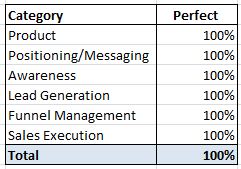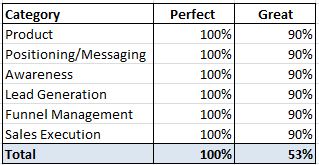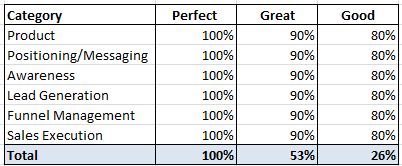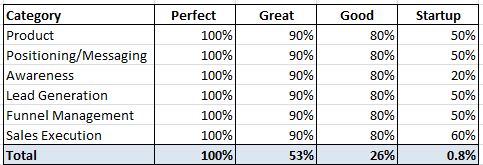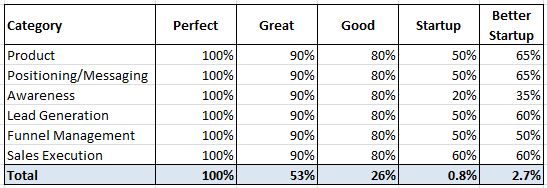by Saeed Khan
 One of the very first articles I wrote on Product Management was titled “You can’t never have too many Product Managers“. I think that was back in 2005 or 2006. Clearly I had a particular bias, 🙂 though quite honestly, I’m pleasantly surprised that I still agree with most of what I wrote back then.
One of the very first articles I wrote on Product Management was titled “You can’t never have too many Product Managers“. I think that was back in 2005 or 2006. Clearly I had a particular bias, 🙂 though quite honestly, I’m pleasantly surprised that I still agree with most of what I wrote back then.
In the article, I wrote the following about the role of Product Management. It’s a bit of a mouthful, but bear with me.
The work of product management is really about solving an optimization problem. In short, how to optimize a finite set of engineering resources to implement the optimal set of product features that best solve the diverse needs of the target audience. In addition, product managers must also be instrumental in shepherding the product through the development and release cycle, working with downstream groups such as marketing, sales and technical support to transfer information and knowledge to them so they can be optimal in their jobs.
OK. I would write that a bit differently today, but the gist would be the same. It’s still an optimization problem, with multiple stages or elements in the process that impact other teams. Product Management plays a key role in those stages and can positively affect the effectiveness of those teams. The following is a simplified list of the key elements to track.
- Product
- Positioning/Messaging
- Awareness
- Lead Generation
- Funnel Management
- Sales Execution
Each of these is a critical component in the overall business success. Now what happens if any one of them are not done well? e.g. you can have a great Product and great Positioning/Messaging, but if Awareness and Lead Generation falter, then even the best Sales Execution cannot do much. Similarly a bad product cannot be saved by flawless execution in the rest of the elements.
But the reality is that none of these are done perfectly. In any given company, some may be done well, others not so well.
So now, let’s do a little math. The following is a very simple measurement model, but I think it illustrates the key point I’m trying to make.
If your company did everything perfectly (i.e. 100% effectiveness for each element), it would achieve maximum success. e.g. $latex 100\%^6$ = 1
Now imagine if your company didn’t perform everything perfectly :-), but at 90% effectiveness. That’s still really great. It means you’ve got a great product, you’re positioning and messaging very well, and your marketing and sales are knocking it out of the park. Then the calculation would be: $latex 90\%^6$ which equals……
What do you think it equals? Take a guess?
Well if you do the math, it is 53%. Seems hard to believe doesn’t it? The company is only half as successful as the perfect example, even though each area is executing at 90% of maximum!
And if we drop the effectiveness per element to 80%, the overall number is $latex 80\%^6$ = 26%. i.e. half of the 90% level!
That’s a huge change between good and great. And yet, there are a lot of companies that would be thrilled to execute at this level.
Now consider a startup. The product is immature, their positioning/messaging is usually weak, they struggle for awareness, their lead generation and sales execution are immature. What do you think that number will be? Don’t peak. 🙂
Yes, that says .8%. Point eight percent! $latex 50\%*50\%*20\%*50\%*50\%*60\%$ is a rather small number.
It shouldn’t be shocking for anyone who has worked in a startup. But here’s what good Product Management can add. A better product, properly positioned and message (i.e. focusing on great use cases and communicated well to the market), leads to better awareness and lead generation. And let’s not even touch Funnel Management or Sales Execution.
Those changes have more than tripled the total effectiveness of the company (2.7% vs. .8%), even though each represents a small increase in Product, Positioning, Awareness and Lead Generation.
I admit. This is a VERY simplistic model, and it’s very easy to drop a few (hypothetical) scenarios into a spreadsheet to illustrate a point. But the point is important: that small changes in a complex system can have significant impact on that system.
A catalyst for change…but how much?
Product Management is, amongst other things, the driver and catalyst for positive system changes in a company. These can be anything from pricing/licensing/packaging, to better positioning/messaging to targeting new use cases or markets etc. Those changes can help a startup achieve initial repeatable success, or move a good company towards greatness. And unlike most other groups, Product Managers don’t live silos, but look across them. Thus Product Managers can identify and change the business in ways other groups cannot.
I don’t know of a way to truly measure the benefit of good (or great) Product Management practices in a company, but there must be a way. Some things like price/licensing changes are easy to measure because there is a clear metric to look at (assuming all else remains static): sales before the change vs. sales after the change But other things are much harder. I once had the following (peculiar) exchange during a planning meeting.
Executive: What is the revenue impact of adding [feature X] to the product?
Me: There’s no way to answer that question.
Executive: But you must have some idea of the value, otherwise why are you adding it?
Me: Yes, there is value. It solves a problem for a subset of our customers.
Executive: So then how many new deals will you get by adding it?
Me: Like I said, it’s impossible to answer.
Executive: But there must be some number you can tie it to. Is it 5% more deals, 10% more deals?
…
The conversation didn’t end there, and as the executive persisted, I threw out some numbers to appease him. He then asked the same question about other features. At the time I thought the question was ridiculous, as there’s absolutely no way to predict revenue on a feature-by-feature basis. But I think he was trying to determine if the planned release would deliver the targeted results. i.e. assuming everyone else executes as expected, what impact will the product changes have? It’s not a completely unreasonable question, but as far as I know, there’s no way to measure that. Is there?
What are your thoughts? How can we start measuring the impact we make in the companies we work in?
Saeed
Tweet this: Is it possible to measure the impact of Product Management? http://wp.me/pXBON-48t #prodmgmt
 Saeed Khan is a founder and Managing Editor of On Product Management, and has worked for the last 20 years in high-technology companies building and managing market leading products. He also speaks regularly at events on the topic of product management and product leadership. You can contact him via Twitter @saeedwkhan or via the Contact Us page on this blog.
Saeed Khan is a founder and Managing Editor of On Product Management, and has worked for the last 20 years in high-technology companies building and managing market leading products. He also speaks regularly at events on the topic of product management and product leadership. You can contact him via Twitter @saeedwkhan or via the Contact Us page on this blog.
